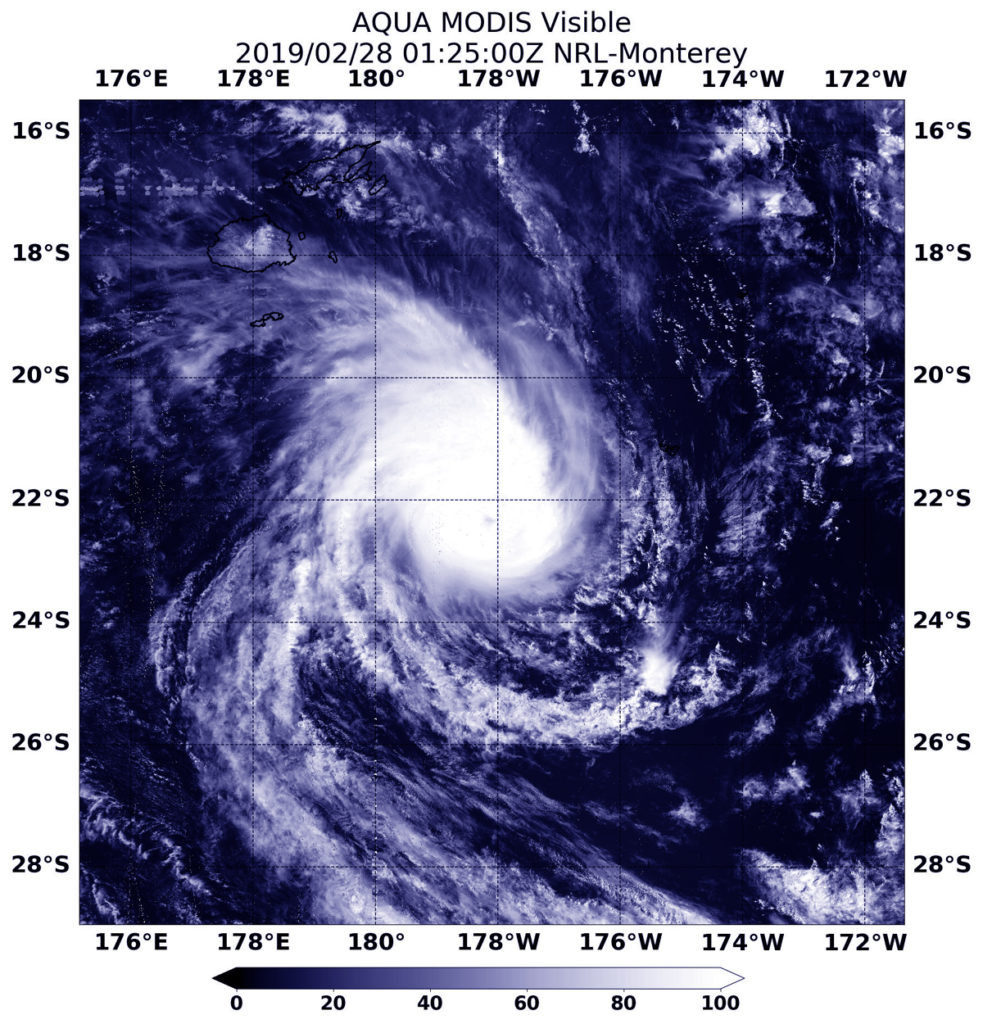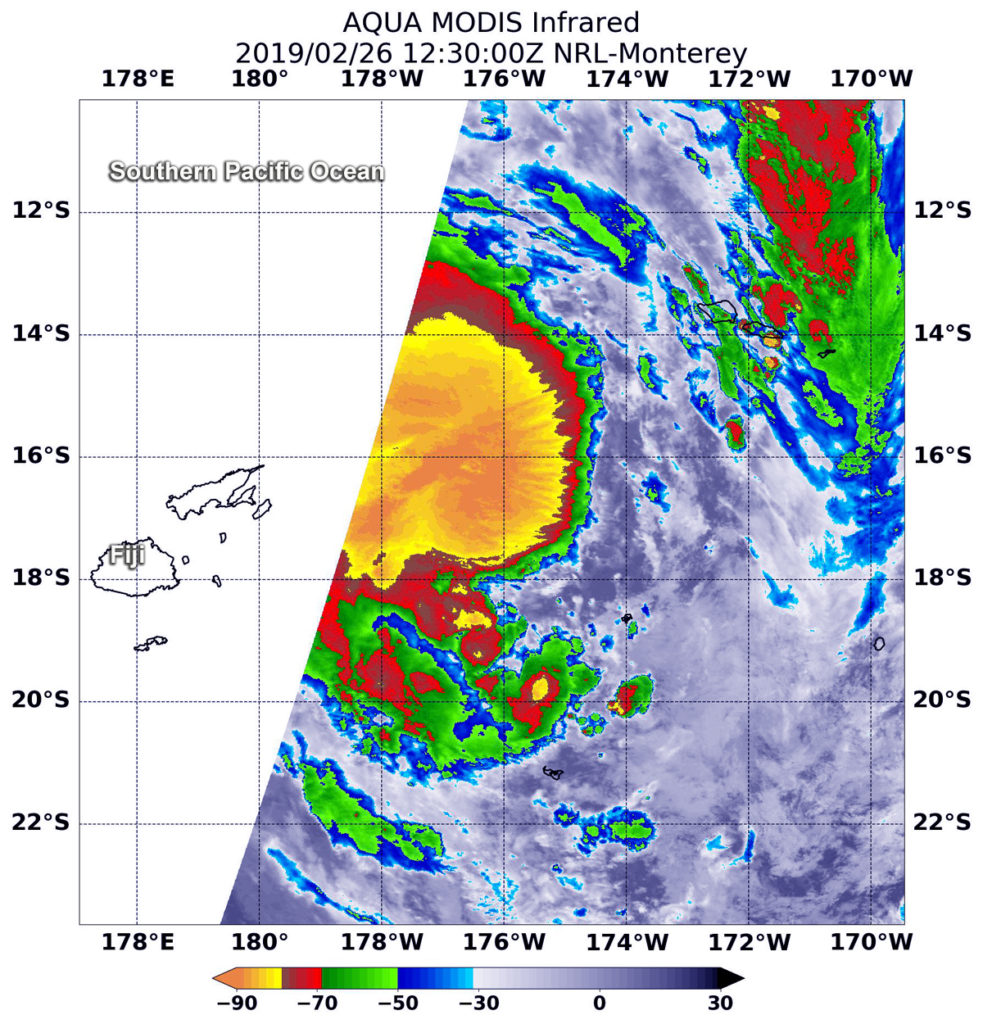Feb. 28, 2019 – NASA Finds a Hint of an Eye in Tropical Cyclone Pola
Visible imagery from NASA’s Aqua satellite revealed the hint of an eye developing in the center of Tropical Cyclone Pola. Warnings in the Southern Pacific Ocean have been posted for Tonga.

he Polynesian kingdom of Tonga consists of more than 170 South Pacific islands, many uninhabited. Forecasts are managed by the Tonga Meteorological Service or TMS.
On February 28, the TMS noted that a tropical cyclone warning is in force for Tonga, with a hurricane force winds warning for Tele-Ki-Tonga and Tele-Ki-Tokelau coastal waters. A strong wind warning remains inforce for Tongatapu and ‘eua land areas and coastal waters. A heavy damaging swell remains inforce for Ha’apai, Tongatapu, ‘eua, Tele-ki-tonga and Tele-ki-tokelau coastal waters.
On Feb. 28, 2019 at 0125 UTC (Feb. 27 at 8:25 p.m. EDT) the Moderate Resolution Imaging Spectroradiometer or MODIS instrument aboard NASA’s Aqua satellite captured a visible image of Tropical Cyclone Pola. The visible imagery provided a hint that an eye was developing. Animated enhanced infrared satellite imagery confirmed that the compact system has developed a 5 nautical-mile wide eye. In addition, microwave imagery indicated tightly-curved banding of thunderstorms were wrapping into the eye.
At 10 a.m. EDT (1500 UTC) on Feb. 28, Pola’s maximum sustained winds had peaked near 90 knots (103 mph/166 kph). The Joint Typhoon Warning Center or JTWC expects the storm will start weakening. Pola was centered near 24.9 degrees south latitude and 178.2 degrees west longitude. Tropical cyclone Pola is located approximately 423 nautical miles south-southeast of Suva, Fiji, and has tracked southward.
The Joint Typhoon Warning Center expects Pola to continue to move south and later transitioning into an extra-tropical storm.
For updated forecasts from the Tonga Meteorological Service, visit: http://www.met.gov.to/


